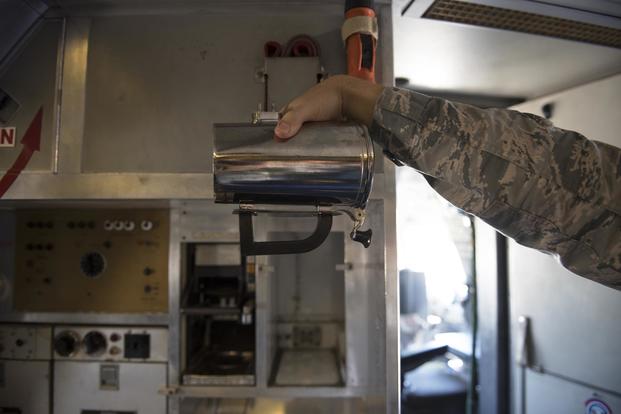How long have I been saying we were on the way to being a 2nd rate power in the world? Quite a while. Now the policies and spending plans for the military that began under Bush 41, accelerated under Clinton, plateaued under Bush 43, and are now accelerating to ludicrous speed under Obama are going to ensure that we are a reactive and purely defensive force rather than a proactive and stabilizing force around the world.
Our military equipment is aging rapidly, and it can’t be replaced overnight. It is often a decade or more from request, to drawing board, to production on any significant military such as airplanes, tanks, and ships. The replacements have to be in the works long before the retirement of a system is necessary. That’s why we have screwed ourselves in the arena of tanker, fighter, and transport aircraft. It takes years to build modern warships, and a long time to train the crews. We are well below the number of ship required now to protect our interests around the world or to act as a stabilizing force. The army needs new tanks and helicopters. Not on the horizon.
We are endangering our future by weakening our defenses. Our government has led us to believe that spending hundreds of billions of dollars on welfare programs is actually their job, and that it is more important than providing a strong national defense.
Without the ability to defend ourselves from all comers, the discussion of anything else is irrelevant. Unless we protect our borders and our interests, and provide a safe environment for the discussion of social issues, those issues will be decided by whoever owns us after the dust settles.
http://www.wnd.com/index.php?fa=PAGE.printable&pageId=124930
Declining U.S. Navy vs. Chinese challenge
Fleet’s ‘much-diminshed’ status creates door of vulnerability to other powers
Posted: February 13, 2010
10:30 pm Eastern
WorldNetDaily
A growing Chinese fleet could keep the declining U.S. Navy out of the Western Pacific, according to an expert cited in a report from Joseph Farah’s G2 Bulletin.
The U.S. also could be faced with new military challenges around the globe because of the projection of power a growing Chinese navy would present.
Yet, the U.S. Navy has cut back the number and type of ships to the level it was prior to the Reagan administration. Indeed, the Navy hasn’t been as small since the administration of William Howard Taft, according to naval expert Seth Cropsey.
The dire development leaves the U.S. vulnerable to “proliferation, resource scarcity, environmental change, the emergence of new international power centers including non-state actors, significant changes in relative U.S. power, failed states and demographic change … (in) an increasingly unstable future and a challenging international strategic environment,” Cropsey said. …
… “The size, shape and strategy of the U.S. Navy are a critical element of America’s position as the world’s great power,” Cropsey said. “Our ability to protect or rend asunder the globe’s ocean-going lines of communication is inseparable from our position as the world’s great power. …
… Globally, Cropsey said, the U.S. Navy’s continued attrition also means a serious threat to the security of the world’s sea lines of communication and the choke points such as the Straits of Hormuz near Iran through which some 40 percent of the world’s energy and other trade pass.
“The consequences of a much-diminished U.S. fleet are complemented by the American public’s ignorance of them, the slow yet steady pace of naval deterioration, and the increasing time and dismayingly large resources needed to recoup sea power surrendered slowly over decades,” Cropsey said.
The gradual decline in the U.S. Navy comes hardly as a surprise to Congress. Last May, Adm. Gary Roughhead, chief of naval operations, told the House Armed Services Committee the Navy was stretched in its ability to modernize and “procure the Navy for tomorrow.”
He said the Navy would reduce its carrier fleet from 11 to 10 for at least three years, which would increase the interval between a departing carrier and its replacement’s arrival “along with the associated risk of absence during a crisis.”
A separate Congressional Research Service report by naval analyst Ronald O’Rourke told Congress that China has built or is in the process of building four new classes of nuclear and conventional-powered attack and ballistic-missile submarines.
(Complete article HERE)
+
Filed under: Military, National Defense | Tagged: Abrams Tank, Air Force, airplanes, army, C-130, C-17, C-5, China, CSAR, CSAR-X, defense, deterance, f-15, F-16, f-22, f-35, F/A-18, Funding, HH-60, KC-10, KC-135, KC-X, lines of communication, M1 Abrams, Medicaid, Medicare, MH-53, Military, National Defense, navy, sea lanes, ships, Social Security, social spending, Tanks, UH-60, Welfare | 3 Comments »



